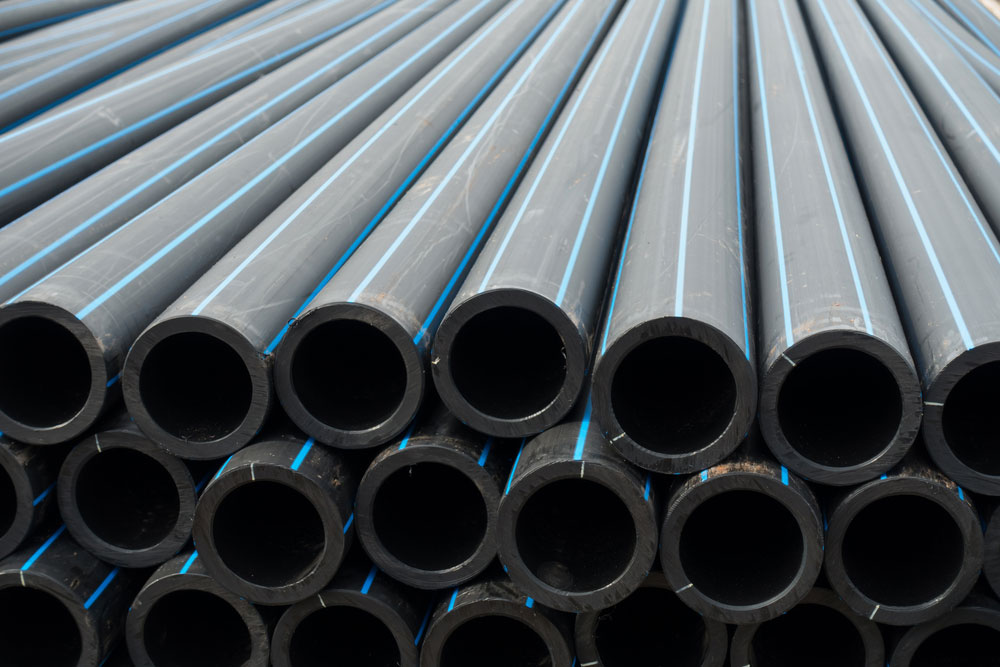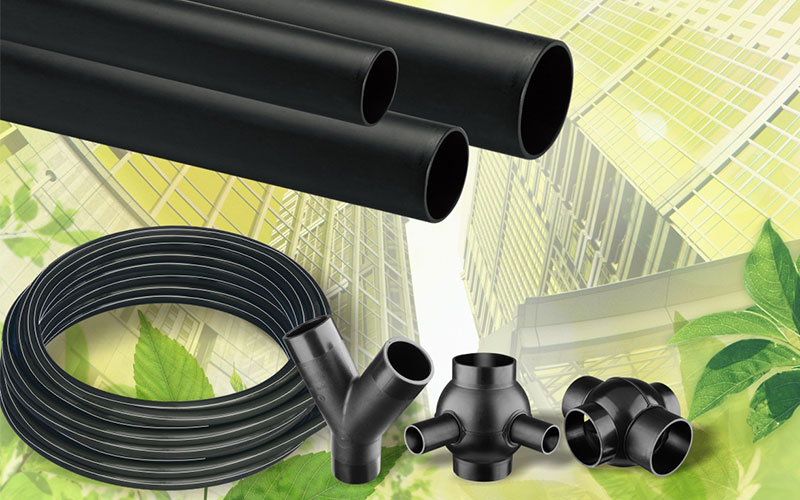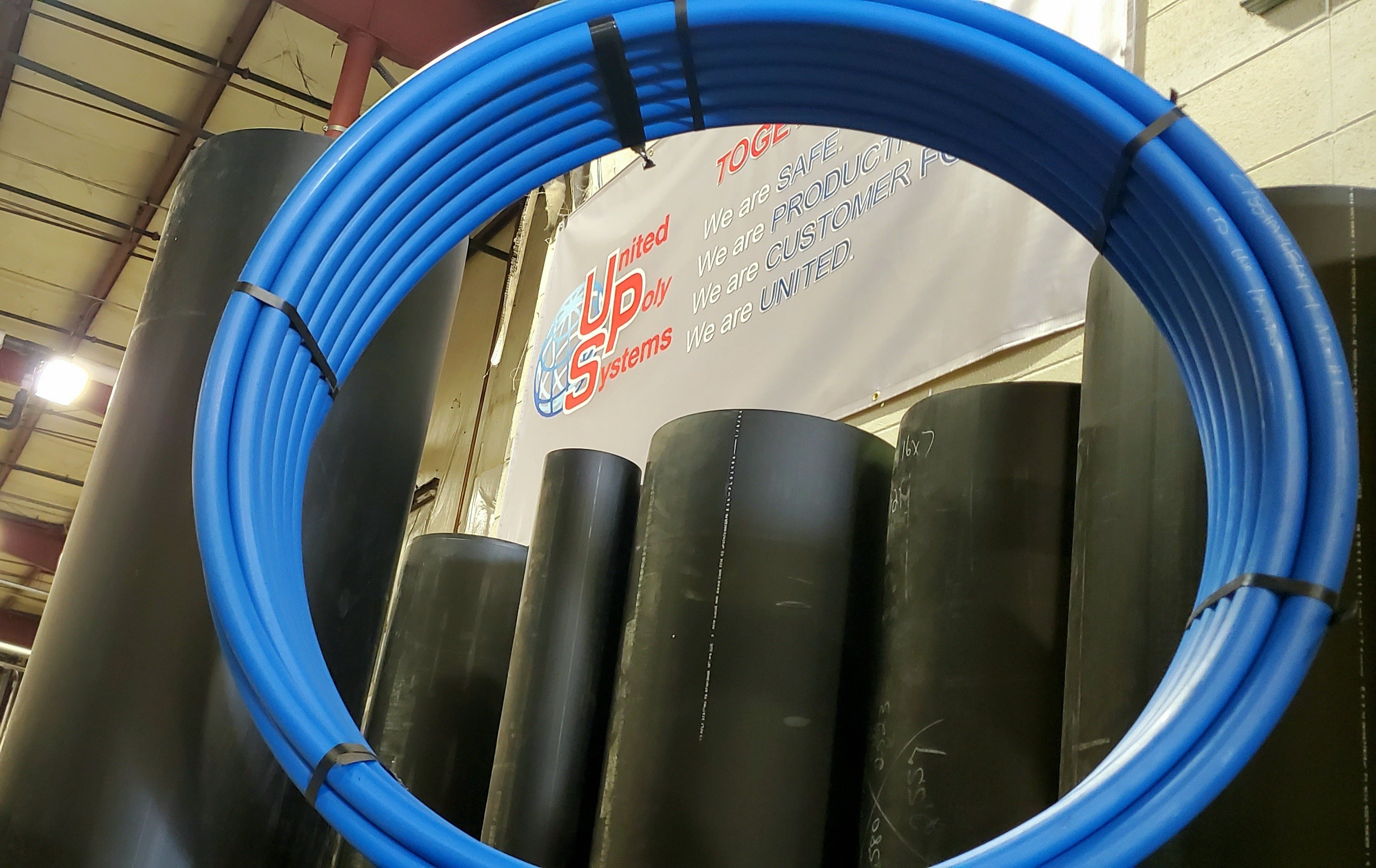Check Out the Production Refine Behind High-Quality HDPE Pipeline and Its Applications
The production procedure of high-quality HDPE pipes is complex and systematic. It begins with the selection of resources that enhance performance. Following this, ethylene undertakes polymerization to develop resin, which is after that shaped with extrusion. Quality control is paramount, guaranteeing that the last product satisfies rigorous standards. However, the trip of HDPE pipelines does not end with manufacturing. Their applications across different sectors expose a broader relevance worth analyzing.
Recognizing HDPE: Characteristics and Advantages

High-density polyethylene (HDPE) is a versatile polycarbonate understood for its longevity and resistance to various ecological variables. This material exhibits excellent tensile stamina, making it ideal for requiring applications. Its low-density structure contributes to a light-weight item, facilitating simplicity of managing and setup. HDPE likewise showcases remarkable resistance to chemicals, which minimizes degradation when subjected to severe substances.
The material's low moisture absorption even more enhances its durability, making it perfect for usage in pipes and tank. Additionally, HDPE is immune to ultraviolet (UV) radiation, making certain that products maintain their honesty also when exposed to sunshine. Its versatility permits for the production of complex forms without compromising strength. The green nature of HDPE, usually derived from recycled materials, contributes to its appeal, advertising lasting practices in production. In general, these residential or commercial properties and benefits make HDPE a preferred selection for numerous commercial and consumer applications.
Raw Material Choice for HDPE Production
The selection of raw materials for HDPE production is necessary to verify the last product meets the wanted specs and quality requirements. High-density polyethylene (HDPE) is mainly produced from polymerized ethylene, originated from fossil gas such as gas or crude oil. The top quality of these feedstocks considerably influences the mechanical and thermal buildings of the final HDPE.
Additives likewise play a significant role in boosting HDPE's efficiency, including anti-oxidants, UV stabilizers, and colorants, which boost durability and resistance to ecological variables. The option procedure must think about not just the chemical make-up of the raw materials yet likewise their processing qualities to guarantee effective production.
Furthermore, the sourcing of resources need to prioritize sustainability and conformity with environmental laws, as accountable techniques are crucial in today's market. Eventually, cautious raw product selection lays the foundation for creating top quality HDPE pipelines suitable for diverse applications.
The Extrusion Process: Forming HDPE Pipeline
The extrusion procedure plays an important duty fit HDPE pipelines, starting with careful material prep work techniques that assure suitable flow and uniformity. Similarly important is the style of the die, which straight affects the final dimensions and surface quality of the pipeline. With each other, these variables add greatly to the efficiency and quality of HDPE pipeline manufacturing.
Material Preparation Techniques
Efficient manufacturing of HDPE pipelines starts with careful material preparation strategies, particularly the extrusion procedure. Throughout this phase, high-density polyethylene material is first dried to remove moisture, ensuring suitable circulation qualities. The resin is then fed into the extruder, where it goes through heating and melting, changing into a viscous state. This home heating procedure is meticulously managed to preserve the material's integrity and performance. The molten HDPE is required with a die, forming it right into a continuous pipe type. Proper temperature management during extrusion is necessary, as it straight impacts the material's residential properties and the end product quality. Once shaped, the HDPE pipe is cooled down and reduced to specified sizes, prepared for succeeding processing and applications.
Die Design Significance
Precision in die design plays an important duty in the extrusion process of HDPE pipelines. The die serves as the last shaping device, directly affecting the pipeline's measurements, wall surface density, and surface area coating. A properly designed die guarantees consistent material circulation, reducing problems such as irregularities and vulnerable points. The geometry of the die need to be optimized to suit the certain residential or commercial properties of HDPE, including its viscosity and thermal actions throughout extrusion. Furthermore, the cooling rate of the material as it travels through the die can considerably impact the pipeline's architectural stability. Investing in advanced die innovation is vital for suppliers aiming to produce premium HDPE pipelines that meet industry criteria and client assumptions.
Quality Assurance Procedures in HDPE Manufacturing
Different aspects affect the high quality of HDPE pipe production, reliable top quality control steps are vital to assure uniformity and reliability in the last item (hdpe pipe suppliers Midland TX). Trick high quality control methods include rigorous material evaluation, validating that the raw polyethylene meets well established criteria for pureness and density. During the extrusion procedure, criteria such as temperature, stress, and cooling time are closely kept track of to maintain dimensional precision and structural honesty
Furthermore, post-production testing is essential; manufacturers often carry out hydrostatic examinations to assess the pipe's toughness and resistance to pressure. Visual assessments for surface flaws better boost high quality guarantee. Accreditation from pertinent requirements organizations, like ASTM or ISO, gives an added layer of integrity. By applying these extensive quality assurance measures, manufacturers can minimize defects, enhance efficiency, and make certain that the HDPE pipelines satisfy the specific needs of different applications, eventually resulting in customer satisfaction and rely on the product.
Applications of HDPE Pipeline Across Industries
HDPE pipelines are made use of throughout various fields as a result of their durability and flexibility. In water circulation systems, they ensure effective shipment, while in wastewater monitoring, they supply reputable remedies for waste transport. Additionally, farming irrigation networks gain from HDPE's resistance to corrosion and adaptability, making it an ideal option for contemporary farming practices.

Water Distribution Equipments
A considerable number of industries depend on high-density polyethylene (HDPE) pipelines for reliable water distribution systems. Understood for their sturdiness and resistance to corrosion, HDPE pipelines are widely used in community supply of water networks, farming watering, and commercial applications. Their light-weight nature facilitates very easy handling and installation, lowering labor prices and time. Additionally, HDPE pipelines can suit different pressure degrees, making them ideal for both low and high-pressure systems. Pipe Manufacturing Midland TX. The flexibility of the product enables seamless assimilation into existing framework, lessening the demand for substantial excavation. In addition, HDPE's resistance to chemical leaching guarantees that the water provided continues to be risk-free and tidy, making it an ideal option for keeping the top quality of potable water throughout numerous industries
Wastewater Management Solutions
Efficient water circulation systems also pave the way for innovative wastewater management services, where high-density polyethylene (HDPE) pipes play a considerable duty. Popular for their toughness and resistance to deterioration, HDPE pipes are perfect for delivering wastewater in different setups. Their versatility enables for easy setup in complicated settings, lessening the requirement for extensive excavation. In addition, HDPE's smooth indoor surface reduces rubbing, boosting flow rates and effectiveness. These pipelines are likewise resistant to chemical leaching, making certain that impurities do not compromise the surrounding environment. Industries, districts, and therapy facilities increasingly rely on HDPE pipes for their reliability and durability, making them a recommended option for modern wastewater administration systems. This versatility underscores the important significance of HDPE pipes across various applications.
Agricultural Watering Networks
Agricultural watering networks profit considerably from using high-density polyethylene (HDPE) pipelines, which give effective and trustworthy water distribution to plants. HDPE pipelines are light-weight, making them simple to deliver and set up, while their adaptability permits for numerous setups in varied surfaces. These pipes demonstrate outstanding resistance to rust, chemicals, and UV radiation, ensuring durability in severe agricultural settings. Furthermore, their smooth indoor surface reduces friction loss, maximizing water flow and reducing power prices related to pumping. The longevity of HDPE pipes, often going beyond 50 years, contributes to lower maintenance and substitute expenditures. Farmers significantly depend on HDPE pipes to improve watering performance and promote sustainable farming practices, inevitably leading to boosted plant returns and resource conservation.

Future Trends in HDPE Pipe Technology
As the need for lasting and reliable infrastructure grows, developments in HDPE pipe technology are positioned to transform various industries. Emerging patterns include the assimilation of clever innovations, such as sensing units and IoT capacities, which help with real-time surveillance of pipeline problems, decreasing upkeep expenses and preventing leaks. In addition, the development of advanced production strategies, such as 3D printing, is allowing the manufacturing of complicated, tailored pipeline layouts that satisfy specific task requirements.
Moreover, the concentrate on recycling and circular economic situation practices is driving the development of HDPE pipelines made from recycled products, boosting sustainability. Boosted jointing methods, such as electro-fusion and mechanical fittings, are likewise enhancing setup efficiency and integrity. Finally, the expanding focus on environmental policies is pressing makers to take on greener manufacturing procedures, ensuring that HDPE pipelines not just fulfill industry click here requirements but additionally foster an even more lasting future for framework advancement.
Regularly Asked Questions
Exactly How Does HDPE Contrast to Other Plastic Products?
HDPE surpasses lots of other plastic products pertaining to durability, chemical resistance, and flexibility. Its low thickness and high tensile stamina make it ideal for numerous applications, often surpassing options in both performance and durability.
What Are the Ecological Influences of HDPE Manufacturing?
The environmental impacts of HDPE manufacturing include greenhouse gas exhausts, power usage, and possible pollution from manufacturing procedures. Furthermore, inappropriate disposal can cause soil and water contamination, raising issues about long-term eco-friendly effects.
Can HDPE Pipes Be Reused?
Yes, HDPE pipes can be recycled. Several centers accept made use of HDPE for handling, changing it into brand-new products. This recycling adds to sustainability efforts, minimizing plastic waste while conserving resources and power in the manufacturing cycle.
What Is the Lifespan of HDPE Water Lines?

Exactly How Do Temperature Variants Impact HDPE Pipe Performance?
Temperature variants greatly affect HDPE pipe efficiency, impacting versatility and strength. Heats can lead to softening, while reduced temperature levels might trigger brittleness, ultimately influencing the pipeline's longevity and suitability for numerous applications in varied environments.